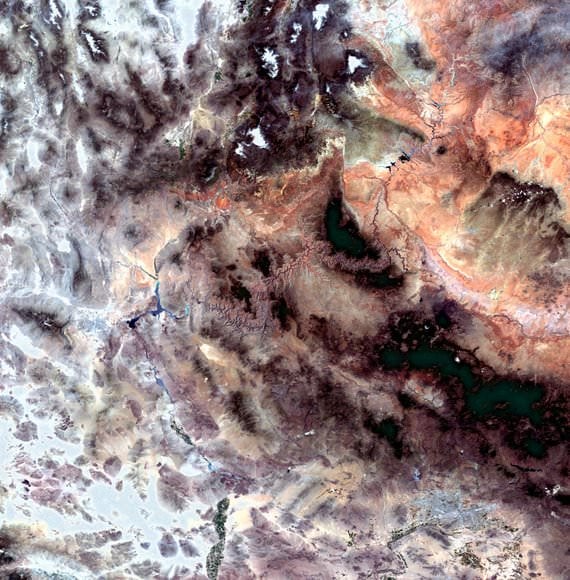[/caption] The Grand Canyon is an awesome sight on Earth -- one of the seven natural wonders of the world – and it looks breathtaking from space, too. This image was taken by the Envisat satellite, showing canyon walls, rock structures, old lava flows, buttes, ravines, stair-step topography in hues of pink, violet and gray.
Also visible in the image are the Colorado Plateau (upper right corner), the Mogollon Plateau (dark area under Colorado Plateau), Lake Meade (Y-shaped water body left of the canyon), Las Vegas, Nevada (bright white and blue area left of Lake Meade) and the southern tip of Utah (upper left).
Although a number of processes combined to create the Grand Canyon, it was formed primarily by the eroding action of the Colorado River that began about six million years ago. Other contributing factors include volcanism, continental drift and the semiarid climate.
As water erosion sculpted this majestic showplace, it revealed layers and layers of exposed rocks that provide us with a profound record of geologic events. As some of Earth's oldest rock lies at the bottom of the canyon, it is said to be 1800 meters and a billion years deep. It is about 443 km long and 8 to 29 km wide.
This image was acquired by Envisat's Medium Resolution Imaging Spectrometer (MERIS) instrument on 10 May 2009, working in Full Resolution mode to provide a spatial resolution of 300 meters.
Source:
ESA
 Universe Today
Universe Today
